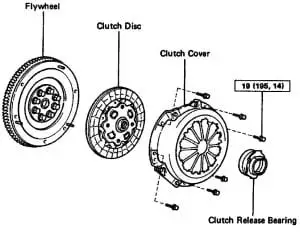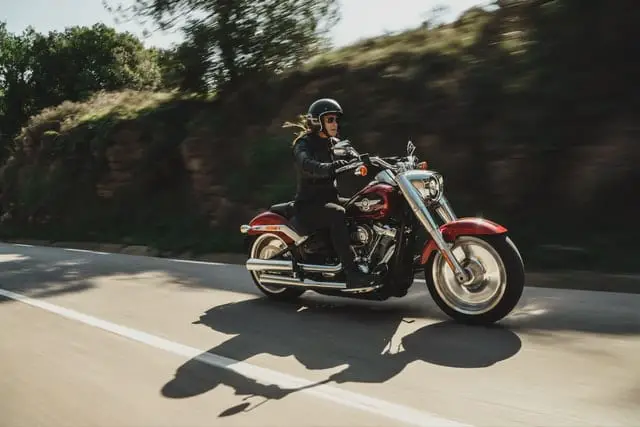At some point in our riding life, we will eventually realize that we can start off directly in 2nd gear. But that brings a ton of follow up questions – is starting off in 2nd gear harmful? Should I do it? How do other riders do it?
I remember researching plenty about this topic and it was digging around in a bunch of forum threads. Fortunately for you, this article will cover everything you want to know about starting off in 2nd gear.
In most cases, you shouldn’t start off in 2nd gear – it creates significant wear to your clutch and causes your engine to stall.
In other cases like going downhill, starting off in 2nd gear is fine – it can save you the hassle of switching gears and won’t hurt your engine.
Satisfied with the quick answer? Probably not. Let me discuss more about the clutch and more reasons why you don’t want to start off in 2nd gear.
Why You Shouldn’t Start Off In 2nd Gear On Motorcycle
Actually, starting off in 2nd gear is possible if the engine has enough power (torque) to handle it. For huge vehicles like buses or trucks, starting off in 2nd gear is okay.
For motorcycles though, most probably not. Motorcycle engines do not have enough engine power to do it. Here are 4 reasons why you don’t want to start off motorcycles in 2nd gear.
- Increased clutch wear. When you start in 2nd gear, your clutch is going to slip for a much longer time until it’s fully engaged and the right speed is achieved. Longer clutch slipping increases clutch wear. More on this later.
- Unnecessary engine rev causing extra pressure on engine. When you start in 2nd gear, you will need to rev the engine much more to produce more torque to move the car. More engine rev means more work for the engine – in the long run this causes extra wear and tear damages to the engine.
- Danger by engine stalling. Engine stalling means your engine dies and switches off. When starting on in 2nd gear, you need to be precise and careful when releasing the clutch. Do this incorrectly and the engine dies. This could be dangerous when you are on an open road.
- Needs skills to pull through. You need some practice to learn how to release the clutch and prevent engine stalling. Why would you take the time to learn something that’s potentially damaging to your clutch and engine? Plus, this could be an unnecessary distraction on the road.
What Does ‘Clutch Slipping’ Mean (& How Clutch Works)?
Clutch Slipping Meaning
When a clutch slip occurs, the rise in RPM does not rise the speed of your vehicle. There are many factors that can cause clutch slip. But in our context, clutch slip happens when your currently engaged gear is higher than what’s required for current speed.
For example, you are currently driving at 5mph in 3rd gear. Revving up hard during this time will not translate to the torque (acceleration) you expect. This happens because your clutch is currently slipping.
3rd gear is too high for the current speed – you should drop to 2nd gear to reduce clutch slipping and retrieve the immediate torque you expect.
To understand better, let’s talk a bit on how a clutch works. This applies to both cars and motorcycles because they both use a friction based clutch.
How Clutch Works (In relation to clutch slip)
Clutch is made of many components. In this section, I will only explain enough to understand how clutch slip happens and its damages.
A clutch’s main function is to transfer the power generated from the engine into the gearbox and thus, turning the wheels.
When fully engaged, a clutch is fully in contact with the flywheel. Flywheel is a disc which is connected to the engine. When an engine generates power, the flywheel is turned. Higher RPM means the flywheel moves faster.
Because the clutch plate is in contact with the flywheel, as the flywheel moves, the clutch also moves – and power up the wheels through the gearbox.
In short, this is how power is transferred from the engine to your wheels:
- Engine generates combustion to move crankshaft
- Crankshaft is connected to flywheel and thus moving it
- Flywheel is in contact with clutch plate and thus moving it
- Clutch is connected to gearbox and thus moving it
- Gearbox is connected to wheels and thus moving the vehicle
So far so good? We now understand how power is transferred from the engine to the wheels and how clutch is the connection between flywheel and gearbox.

Anatomy of a clutch. Flywheel is connected to crankshaft and move with your engine RPM. Clutch disc is pressed against flywheel and will move due to friction. Clutch disc is connected to gearbox and move wheels.
Now let’s focus on clutch slip.
So far I have been telling you how the clutch is in contact with the flywheel. The focus here is ‘in-contact’. A clutch is not directly connected to the flywheel. Instead, the surface of the clutch plate is pressed against the flywheel.
When the flywheel moves, the clutch is also moved due to friction. This is important because a clutch has to be engaged and disengaged.
Clutch slip occurs when the power required to turn the gearbox is higher than expected. The friction from the surface of the clutch plate and flywheel is not strong enough and thus, causing the clutch to ‘slip’.
Continuous clutch slipping can quickly wear out the clutch plate – not good at all. Now let’s return to the topic of this article. How does starting off in 2nd gear cause clutch slipping and cause damage.
Here’s a great YouTube video explaining the clutch disc, flywheels and clutch slipping.
How Starting Off in 2nd Gear Cause Clutch Slipping
So far, I have explained how a clutch works and how clutch slipping happens. If you have not read this, scroll up and understand that first!
Starting off in 2nd gear causes clutch slip because you need more power to move a vehicle at higher gears. This is especially true when trying to move a stand still vehicle from 2nd gear.
At low RPM, the flywheel is not moving fast enough to have the power to move the clutch plate in 2nd gear.
This causes the clutch to slip and power is not delivered to the wheels. You need to rev more and bring the RPM much higher for the wheels to move.
As soon as your wheels are moving at the right speed for the gear, clutch slipping should no longer happen and power is transferred correctly from the engine to gearbox.
When Could You Start Off In 2nd Gear
In certain scenarios, starting off in 2nd gear is actually fine. These are the situations where you don’t need that much torque and you will only stay in 1st gear for a very short period of time.
Here is a list of such situations where starting off in 2nd gear is actually fine:
- During snow. During snow, you want your vehicle to move slower and controlled. Starting off in 2nd gear is an option here because you will have lesser torque – causing your car to move much slower.
- Going downhill. When going downhill you don’t need as much power and torque to move anymore. Starting off in 1st gear may be too short. Thus, starting off in 2nd gear is the better option.
- When you are not completely stopped. In scenarios where you had to slow down but not completely stopped yet, starting off in 2nd gear is a better approach and will not harm your clutch. Example scenarios are speed bumps or when traffic light turns green before you make a complete halt.


